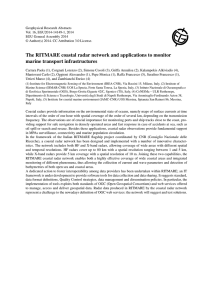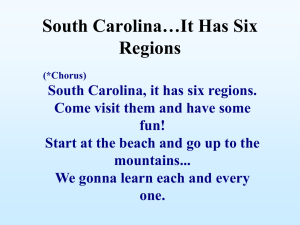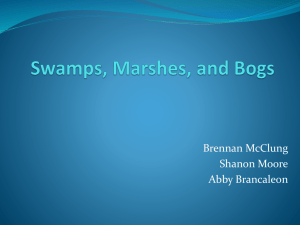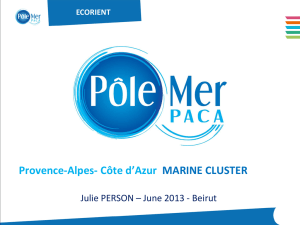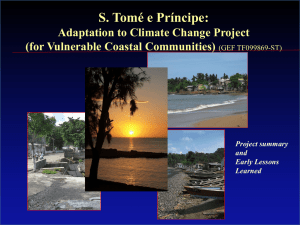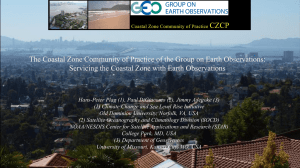Climate Change Adaptation - Georgia Planning Association
advertisement
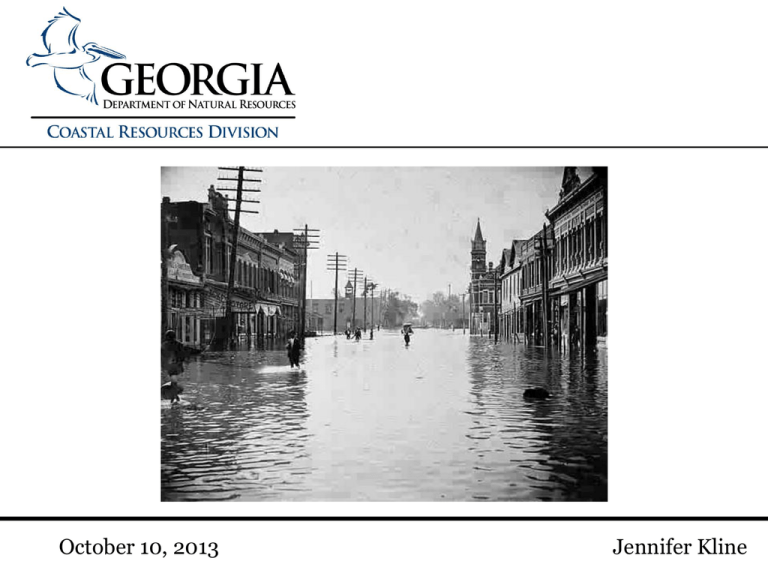
October 10, 2013 Jennifer Kline DNR/CRD/GCMP Georgia Coastal Management Program, funded through the federal Coastal Zone Management Act and administered through NOAA, works within the eleven coastal counties to provide technical assistance, funding and support Objectives of Coastal Hazards Program: Understand the needs of local governments, local EMA’s and other state agencies. Facilitate Georgia Coastal Hazards Stakeholder Group Provide Coastal Hazards training and technical assistance Act as liaison between federal and state agencies to local governments Promote research projects that foster the transfer of science to management of Coastal Hazards. Assist in Coastal Incentive Grant applications that tie into the Disaster Resilient Communities theme. Georgia Department of Natural Resources Coastal Resources Division Georgia Disaster Recovery and Redevelopment Plan Governor signed Executive Order January 14, 2013 • Combine state hazard and threat assessment with coastal vulnerability assessment • Develop state-wide framework to include Economic Development, Health and Social services, Community Development Planning and Housing, Infrastructure Systems, Natural and Cultural Resources. • Pilot the framework in one urban oceanfacing community and in one rural inland community. • Conduct education and outreach workshops • Implement state-wide. Georgia Department of Natural Resources Coastal Resources Division Considerations for Local Governments • Include Sea Level Rise in Local Hazard Mitigation Plans • Include Sea Level Rise in Local Comprehensive Plans • Future Land Use Planning • Zoning • Include in Capital Improvement Plans •Create a stand alone Long-Term Hazards Plan GOAL H: FACTOR SEA LEVEL RISE INTO LAND USE AND TRANSPORTATION PLANNING Objective 1. Assure that new development will not compromise natural protection of current development or be threatened by sea level rise. Strategy a. Consider sea-level rise using the most current, scientifically sound, existing and new data and analysis in approving new residential or commercial development. Strategy b. Consider the 500 year Flood Plain in approving new residential development. Strategy c. Consider a stormwater utility to discourage construction of impervious surface and encourage removal of unnecessary impervious surfaces. Georgia Department of Natural Resources Coastal Resources Division GCMP’s Coastal Incentive Grant Program ~ 1 million dollars each year to local governments in GA 11 coastal counties, research institutions and other state agencies other than DNR. • Garden City: (Plan for a) Disaster Resilient Community • Effects of Sea Level Rise & Increased Frequency of Storms and Salt Water Intrusion on GA estuaries: UGA • Bryan Co. GIS database Development for Sustainability and Resiliency Planning • Brantley Co. Disaster Preparedness Plan (highlighting fire risk to the natural and human built environment) • Assessment & Application of the Social Vulnerability Index for Coastal Hazards Planning of Glynn Co. • Coastal Hazards Portal and Education and Outreach: UGA/SKIO Georgia Department of Natural Resources Coastal Resources Division Georgia Coastal Hazards Portal http://gchp.skio.usg.edu Georgia Department of Natural Resources Coastal Resources Division Other Resources Governors’ South Atlantic Alliance www.southatlanticalliance.org Southeast and Caribbean Climate Community of Practice http://stormsmart.org/groups/sec-ccop/ Ga DNR Coastal Resources Division www.coastalGADNR.org Jennifer Kline Jennifer.kline@dnr.state.ga.us Georgia Department of Natural Resources Coastal Resources Division




